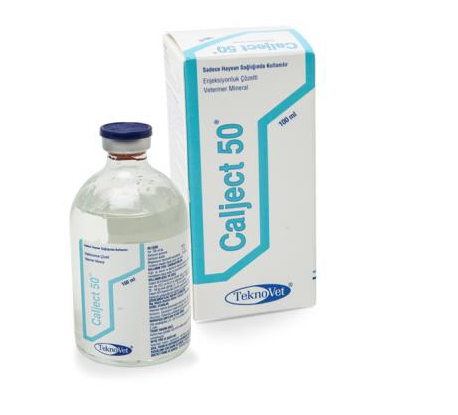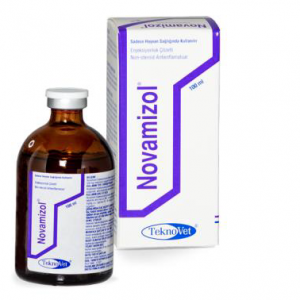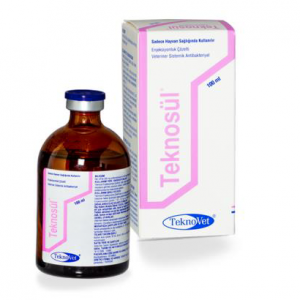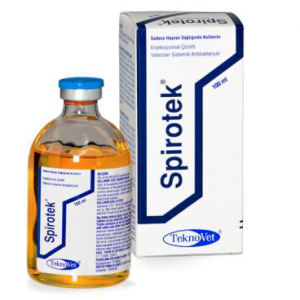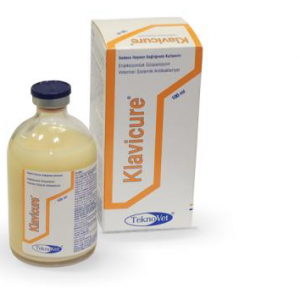COMPOSITION
Calject Injectable Solution is a clear, pale yellow coloured solution. Each 100 ml contains:
Calcium gluconate 46.5 g
Calcium acetate 3.7 g
Magnesium hypophosphite hexahydrate 3 g
Boric acid (excipient)
INDICATIONS FOR USE
It is indicated in cattle, horses, sheep and goats mainly in the treatment of and protection from diseases caused by calcium, magnesium and phosphorus deficiencies.
– Milk fever (calf fever, paresis puerperalis), pregnancy toxemia, metabolic imbalances during parturition
– Lactation tetany in mares, transit tetany in pregnant cows and sheep, barn tetany before parturition in cows, grass tetany, paresis, paraplegia, various infections and tetany cases caused by operations
– Rickets, osteomalacia, bone and joint defects, growth deficiencies in young animals, for accelerating the healing of broken bones
– Vascular diseases, to stop the bleedings related to internal bleedings, lacerations, epistaxis and other diseases, haemoglobinuria cases in cattle after parturition
– Allergic diseases, laminitis, urticaria, serum disease, anasarca (morbus maculosus), anaphylactic shock and allergic mammary oedemas
– As supportive in poisonings with moldy and rotten food, organic phosphorus compounds and various chemicals, snake and bug bites
ADMINISTRATION ROUTES AND AMOUNTS
Administer by slow intravenous, intramuscular or subcutaneous routes to cattle, horses, sheep and goats. Unless advised otherwise by the veterinarian, the recommended doses are as follows:
| Animal species | Doses |
| Horse – Cattle (200 – 500 kg) | 80 – 100 ml |
| Sheep – Goat (25 – 50 kg) | 15 – 25 ml |
The response to administration is quick; animal’s response to calcium treatment appears as tremors at the superficial muscles and twitching, increase in body temperature, sweating on the muzzle, respiration and pulse returning to normal and animals trying to get on their feet. As soon as these indications begin to show up, drug administration must be stopped. A small quantity of additional dose may be administered via intramuscular or subcutaneous routes if approved by the veterinarian. Calcium treatment is repeated in animals that are not able to get on their feet within 5 – 8 hours.
Although 3 – 4 g of calcium is sufficient for the treatment in some of the sick animals, it may be required to administer 10 – 12 g and even more to some animals at the initial administration.
WITHDRAWAL PERIOD(S)
Withdrawal period for meat and milk is 0 (zero) days.
MARKETING PACKAGING
100 ml in colourless glass vial and 250 ml in colourless polyethylene bottle inside cardboard boxes.
